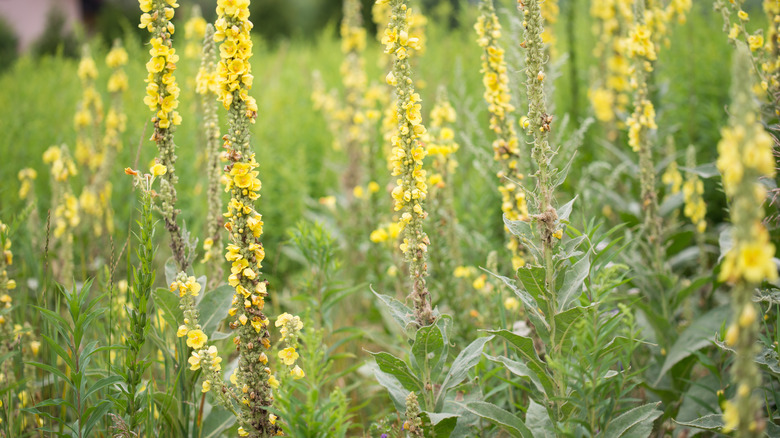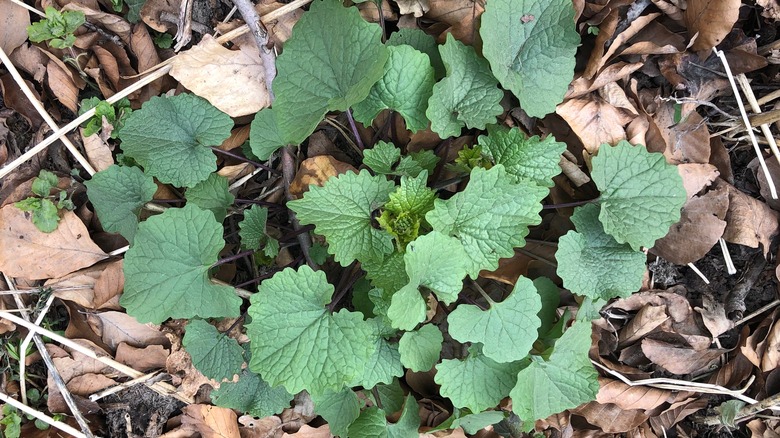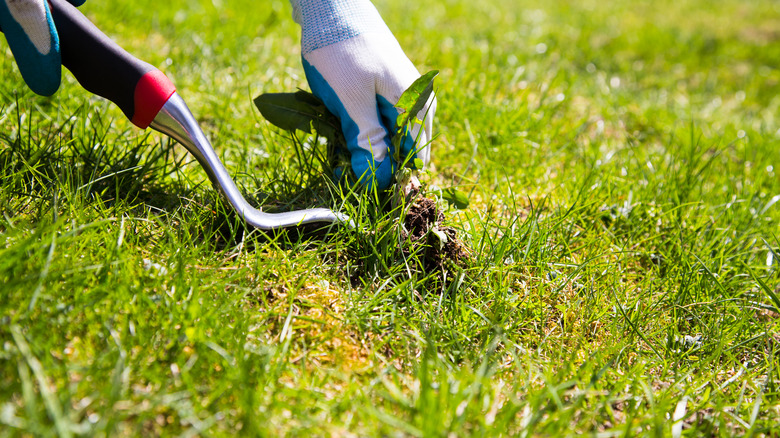How Stealthy Biennial Weeds Survive And What You Can Do To Get Rid Of Them
There are few things more annoying than having huge numbers of large weeds flowering and setting seed in your lawn and garden, seemingly out of nowhere. While the weeds may have seemed to appear suddenly, some of them may have been quietly living on your property for the past year, escaping notice by remaining low-growing and innocuous until the time was right. These biennial weeds have a two-year life cycle, often looking quite different during their first year of growth. If you are able to find and remove these plants during their first year, you can destroy them before they have the opportunity to reproduce, stopping the pesky plants in their tracks.
While many plants, including popular garden flowers like sweet William, are biennials, this growth cycle is especially frustrating when it comes to invasive weeds. Garlic mustard, common mullein, and many types of hard-to-banish thistle weeds are considered noxious plants in many parts of the United States. These can easily go unnoticed during their first year of growth before springing into action and setting seed during their second year. Luckily, you can learn to identify the basal rosette forms these plants, as well as many other invasive biennials have during their first year. Then, through mechanical removal or in some cases herbicides, you can hopefully get rid of these pests before they have the opportunity to set seed.
Identifying biennial weeds during their first year of growth
While biennial weeds often look far different during their first year than they do during their second year, that doesn't mean you can't learn to identify them. Most take a form described as a basal rosette initially, which means the leaves grow out in a whorled shape from a central location. This is true not only for mullein, garlic mustard, and biennial bull thistles, but also for other biennial weeds including poison hemlock, burdock, and dame's rocket.
While the leaves of common mullein are fuzzy and soft, this is not the case for all biennial weeds. Garlic mustard leaves are rough, and shaped like hearts with jagged edges. Poison hemlock leaves, on the other hand, bear a striking resemblance to the fringed leaves of their relative the carrot. While these different plants may be difficult to remember and ID on your own, you can fortunately use Google to identify plants, making it an invaluable tool in your fight against these diverse weeds.
Getting rid of biennial weeds
Once you've learned to identify biennial weeds early in their growth cycle, you can remove them before they cause too many problems. Most can be killed by digging or pulling them out, and unlike a lot of perennial weeds they don't tend to grow back from their root fragments. Just be sure to wear gloves and take necessary precautions, especially when you remove toxic plants like poison hemlock from your yard.
While herbicides can also be used if necessary, especially if there is a large amount of noxious weeds present, postemergence herbicides are generally preferable to premergence ones. If you aren't able to find and remove biennials during their first year of growth, there is often a brief window of time during the spring of their second year when they can be removed before going to seed. Mulch and ground cover plants can also go a long way towards suppressing all types of weeds, making them another useful tool in your fight against biennials.


